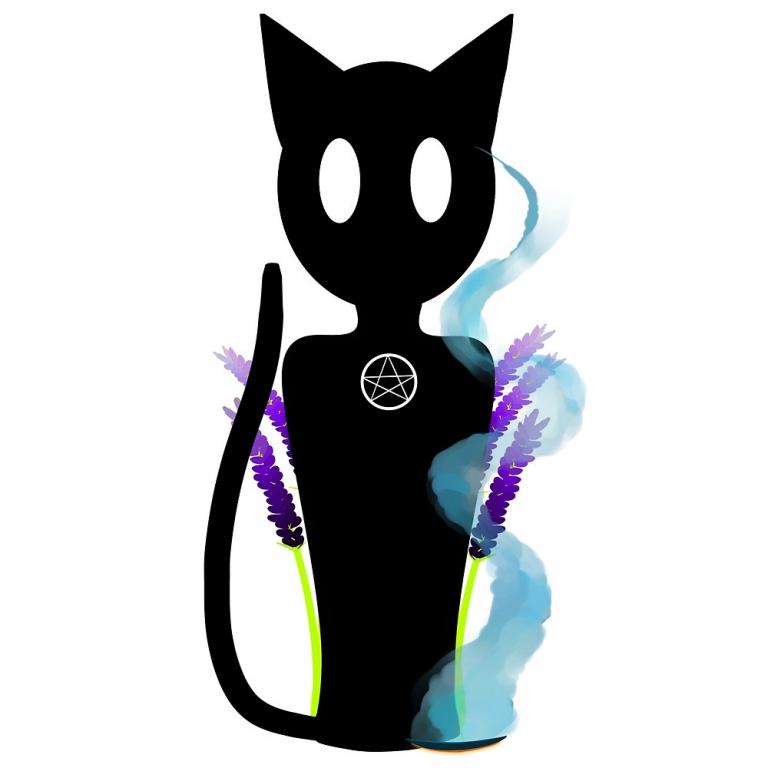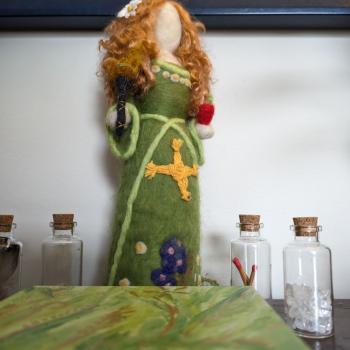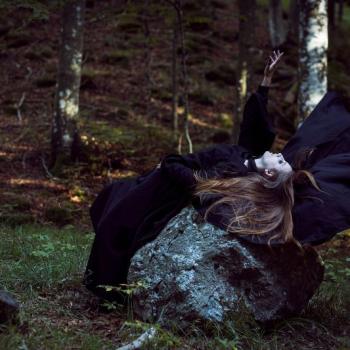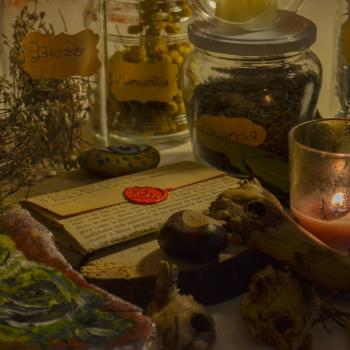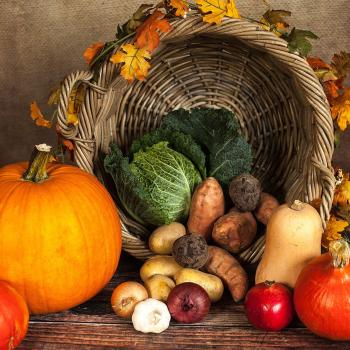Lavender is one of my favorite plant allies. This is a plant growing in my garden, harvested and kept in my apothecary as dried buds, and holds a place in my kitchen cabinet for cooking, baking, and enjoying as tea. As a Witch, I use lavender for a variety of reasons in my magickal and devotional practice. So, let’s take a look at this wonderful plant and how to use its magickal and mundane properties.
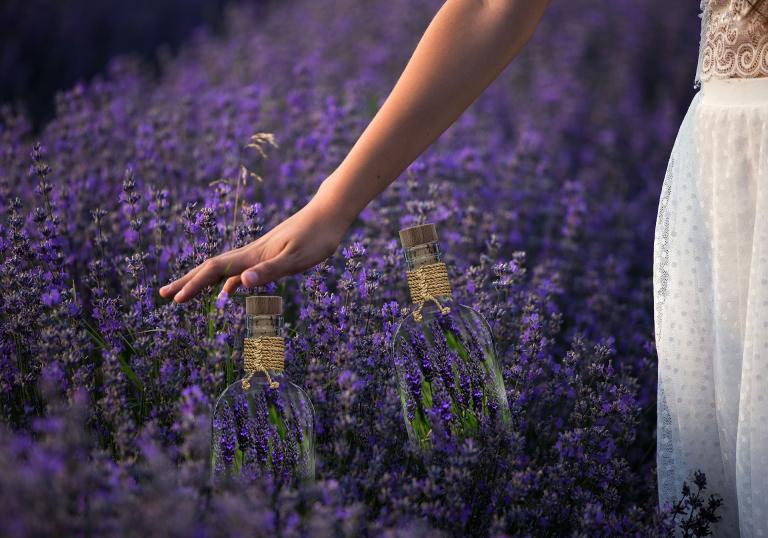
Let’s Talk About Lavender
An herb that originates from the Mediterranean, L. angustifolia is colloquially named for its purple flowers. Over time, cultivation, and through hybridization, the plant can now grow in a variety of climates and blooming seasons around the world. Even the blossoms are no longer strictly purple but can come in varying shades such as violet-blue, rose, pastel pink, white, and yellow. And while the French and Spanish varieties are popular, we will be focusing on the English variety.
English Lavender
As a perennial, this is a plant that can return for several years given the right growing conditions. Lavender needs lots of sunshine (6-8 hours a day) and soil that’s a bit dry so be sure not to overwater. They do not enjoy “wet feet.” According to Garden Design, if the plants are not thriving then they are probably receiving too much water, the soil is too heavy or dense, the plants are not receiving enough light, or a combination thereof.
However, it is possible to grow healthy lavender plants in a container. This is also the best option for Winter in places such as Michigan (where I live), to bring the plants indoors for the cold months (or cover them before the first hard frost if you mean to keep them outdoors). Make sure the containers have good drainage, use a good organic potting mix, and stick them in a sunny window.
For the most part, this is a low maintenance plant. Do remember to cut back blossoms as needed to encourage more growth in Spring and Summer (but stop in the Autumn). You can plant lavender along walkways, driveways (that’s where mine are), around porches, etc. The scent discourages pests such as fleas and mosquitoes but does attract bees and butterflies.
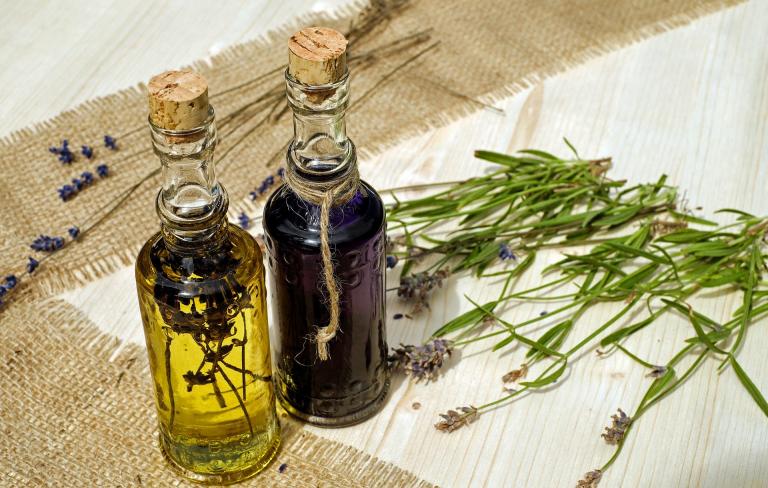
Some Mundane Uses Of Lavender
Now, I know many people do not enjoy the scent of this herb (including my husband). I love it! Earthy, yet floral, lavender is a staple within my home. I use it for cooking, cleaning, haircare, skincare, “first-aid” relief for minor abrasions, rashes, sunburn, and itchiness.
The essential oil is an ingredient in blends for headaches, nasal congestion, asthma. And then there are the benefits of promoting sleep, peace and calmness, stress relief, etc.
Obviously, there are many reasons why a person may not use lavender, physical sensitivity is one of them. However, if you do not have an allergic reaction (or can learn to enjoy the scent), I do recommend lavender be added to your life. Here are some suggestions:
As a tea: Lavender has a pleasant taste (as long as it is not steeped overlong, up to five minutes is all that’s needed otherwise it may taste bitter or soapy). This herbal infusion is said to assist in digestive issues and aid in relieving upset stomach, nausea, gas. It is also said to help with aches and pains from sore muscles, head pain, etc.
As a cooking herb: The dried blossoms from this plant can be used in a variety of desserts (including one of my favorite cookie recipes) or added to an herb blend (such as Herbs de Provence) for use with chicken, pork, and fish (which my husband does enjoy).
As a simple syrup: Creating a simple syrup using sugar, water, and lavender buds creates a delicious and aromatic addition to lemonade, tea, or a refreshing cocktail. And if you don’t know how to make a simple syrup it’s easy. Bring 1 cup of water to a boil, add 1 – 2 tablespoon of dried lavender buds (make sure they have a nice color and smell fresh). Lower the temperature and let it steep about 5 minutes. Remove the flower buds and add 2 cups of sugar until dissolved. Raise heat and simmer for 15 minutes. Allow the syrup to cool and then bottle. It will keep in the refrigerator for a couple of weeks.
Around the home: In a natural cleaning spray.
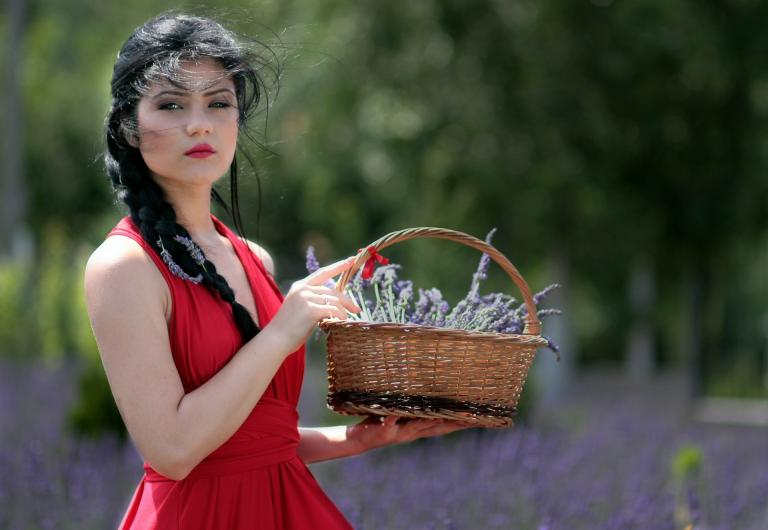
Some Magickal Uses For Lavender
As a Hekataen Green Witch, I work with this plant in a number of magickal capacities. Associated with Hekate, it makes a wonderful incense to burn or offering to give. Lavender has a strong association with air and the East (or water and the West, depending on your source), Wednesday, Mercury, and Mid-Summer/Litha.
Intentions with which to use lavender are many including attraction, awareness, balance, clarity, concentration, goals, grief, healing, intuition, protection (a favorite use of mine), psychic ability, strength, etc. There are many reasons to add lavender as a plant ally in your spellcraft, rituals, and magickal workings.
Take some time to get to know the plant spirit. Even if you only work with the dried herb, make yourself a cup of lavender tea (hot or iced), sit down, sip your tea, and open your spirit to the experience. Or put a drop of the essential oil on your palms (check for sensitivity and use a carrier oil as well), rub your hands together and breathe the scent while opening your spirit to the plant spirit. Ask the plant to work with you and go from there.
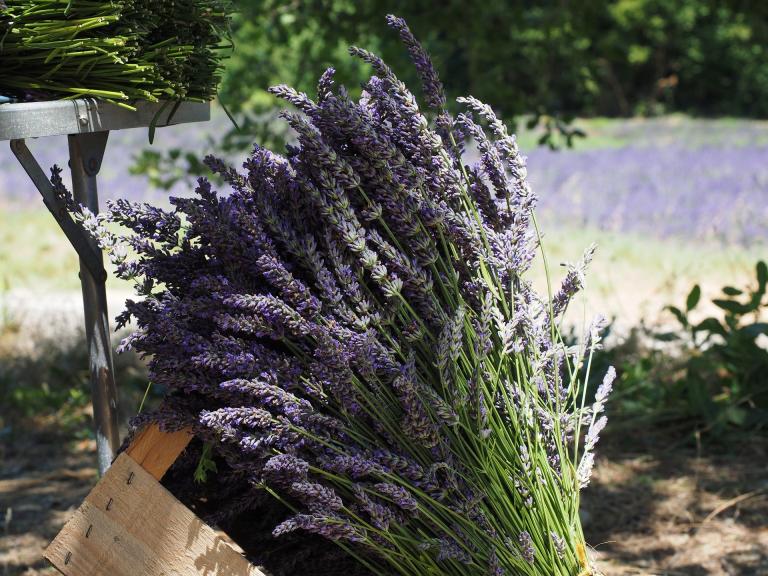
Purification. Third Eye. Protection.
As noted above, there are many ways to use this plant in your life. Now I will share three specific magickal ways in which to work with this marvelous plant.
Purification
- Use a lavender soap, create a sachet, or blend the essential oil with a carrier oil and sea salt to use during bathing/cleansing before a ritual.
- Use a bundle of dried buds as sacred smoke to purify the space, yourself, and/or other participants before a magickal working.
- Boil 4 cups of water and add 1/4 cup of dried lavender buds. Steep for 5 minutes or so. Cool, then use as a wash on floors, baseboards, entryways, etc., to purify the home.
- Set up a diffuser and add three or four drops of essential oil. Set the machine to run for an hour or two.
- Anoint yourself with a drop of lavender (with a carrier oil) to purify yourself.
Third Eye
- Anoint your forehead (between the brows) with a drop of lavender (with a carrier oil) to awaken the Witches/Third Eye.
- Spray your pillow with lavender water, allow to dry, and spend a moment or two in meditation before bedtime for dream awareness.
- Burn lavender incense as you meditate (be sure the room is well ventilated).
- Create a sachet to carry or wear during divination.
- Sip lavender tea in preparation for divination.
Protection
- Sprinkle lavender buds in front of doors and in windows to discourage negative energy or spirits from entering.
- Wear a talisman made of lavender buds in a sachet to carry or wear in a necklace bottle.
- Wear a wooden pentacle that has been anointed with lavender oil.
- Grow lavender in or around your home.
- Spray a lavender wash on 4 “ward stones” and place each one at the four corners of your home or property.
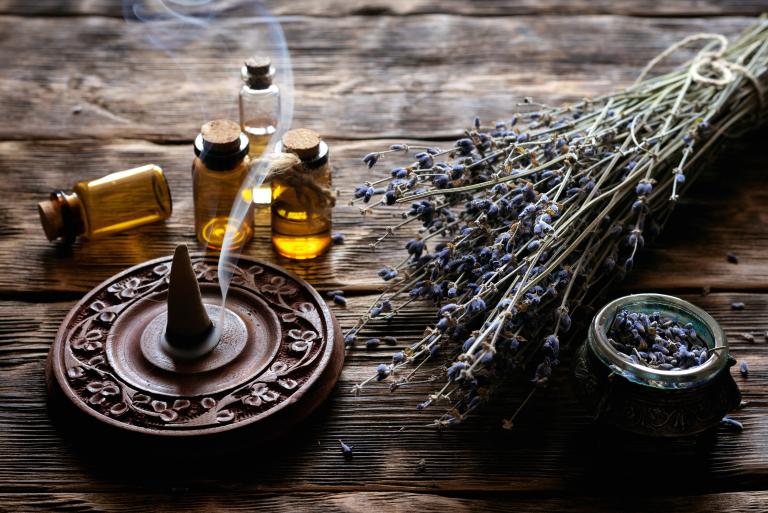
Let your intuition be your guide as you work with Lavender in both mundane and magickal ways. In my experience, this plant is a ready and willing ally.

